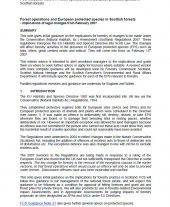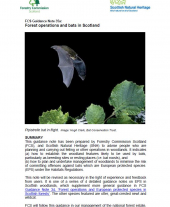Managing Forests for White-tailed Eagles

This practice note provides advice to forest managers and landowners to help them to plan and carry out forestry operations and other activities in relation to the statutory protection of white-tailed eagles (sea eagles).
White-tailed eagles (sea eagles) were re-introduced to Scotland from the 1970s and there are now over 50 breeding pairs. They frequently nest and roost in woodlands and tend to use habitual nest sites. The species has a high degree of legal protection, and woodland managers need to plan operations carefully to avoid disturbing the birds or damaging their nests. During the breeding season, between 1 February and 31 August, most forestry operations and activities should be avoided or severely restricted within 250 m of an active nest. Depending on circumstances, it may be possible to carry out a range of management and recreational activities between 250 m and 500 m from an active nest without risk of disturbance. At other times, activities up to and around nest sites may normally be carried out with little risk of disturbance, although habitually-used nests themselves are protected from damage and destruction, even when not in use. At any time, birds should be protected from repeated disturbance (harassment), for example at roost sites, as this is also an offence.
File Name
fcpn101.pdf
Category
File Size
1.9 MB
File Type
application/pdf
Version
1


